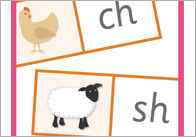Helping Children to Listen at Storytime: With Help from Elton John and The Proclaimers!

When I was at secondary school my friends and I wanted to start a band. We split after one rehearsal: not because of ‘musical differences’ but because we couldn’t decide what to call the band.
There were four name choices: Weaver’s Answer (Terry Weaver was to be our lead singer, but he left at lunchtime); Blasted Dawn (our drummer fancied a girl called Dawn, so that was a no brainer); Midnight’s Children (too ‘progressive’, as we wanted to be a heavy rock band) and my favourite, The Junkyard Angels (rejected out of hand because only bands from the early 60’s had names beginning with The. This was a few years before Punk, with The Sex Pistols, The Clash, The Damned etc.). Hindsight is a wonderful thing, and I can see now that we were doomed to failure because we were asking the wrong questions about our band. Obviously we should have been thinking: “What accent are we going to sing in?”
It was 1973, and Elton John was just starting to be huge. Though he was from Watford, he sang as if he was from the Deep South (of the USA). Robert Plant of Led Zeppelin sang like an American, and he was from the West Midlands. (I’ve often wondered how Stairway to Heaven would have sounded if he had kept his West Bromwich accent.) Only The Beatles could get away with singing in a UK regional accent. Even Mick Jagger, who was a posh grammar school boy who attended the London School of Economics, spoke like a Cockney but sang like a Yank. If we were going to make it big internationally then we were going to have to dump our Scottish accents and sing like Elvis, Alice Cooper, or even Johnny Cash!
It always amazes me how children pick up their local accent. Children as young as 18 months will automatically adopt the accent of those closest to them; and without their parents thinking about it either. It’s an amazing feat, and comes about through babies and toddlers ‘tuning in’ to the speech that they hear around them, and when adults play and talk with them. Children are amazing, and most learn to talk even though they are brought up in families, settings and schools that are full of background noise. As they mature, they seem to be able to filter out sounds in the environment, and focus on what is important; i.e. what is being said to them.
However there is one situation where children just can’t cope with background noise: when sitting in a big group at storytime. I have been involved in so many group times when children have been unable to focus on me because of what is going on in the background: including adults talking, furniture being put away, adults sweeping up, the phone ringing, parents collecting their children, the Head popping her head round the door and trying to talk to me when I am in mid flow.
Any adult who has tried to hold the attention of young children at storytime will know that the environment has to be just right: the children need to be sitting comfortably; they need to be fresh and attentive; there should be no interruptions; and all the adults need to be sitting listening, so that they are acting as good role models.
On my course, Bring Storytime to Life!, we spend time practicing using accents and funny voices, how to handle puppets, and how to get your young audience involved. But by far the most important part of the day is about how to organise all the adults in the setting so that they are all there with you, and how to make sure that there are absolutely no distractions. I liken storytime to prime time TV. You could have as many as 30 young children in front of you for 20 minutes. That’s a lot of minutes, and a lot of children, so each one of those children needs to be fully involved and enjoying themselves. If not, then it is a waste of their time, and a waste of yours.
The following pointers have been shown time and again to lead to improved storytimes for children and adults alike:
– Choose your time. The end of the session is the worst possible time
– Make sure all adults are present, and joining in
– Discourage all interruptions, by letting the management and parents know that your storytime is ‘no interruption time’
– Put down a nice clean rug for the children to sit on
– Make sure the children have enough space to be comfortable
– Start with a ‘hello’ song and finish with a ‘goodbye’ song
– Plan how you are going to present your story, and have lots of props for the children to handle and look at
– After your story sing a song that is related; e.g. Old Macdonald after a farmyard story or We’re all going to the zoo after a zoo story.
It’s not always easy to change the way that adults organise themselves, but If storytime is not working for you and the children you care for, then something’s gotta change. I would recommend beginning with all adults being present.
Imagine my surprise when a Scottish band made it big all over the world in the 90’s by singing in Edinburgh accents and having a name beginning with The. Maybe if my friends had listened to me we could have been as huge as The Proclaimers!
For more information about successful storytimes visit Michael Jones’ very successful website Talk 4 Meaning.
Popular Teaching Resources
Stay Up To Date
Sign up for our newsletter and we’ll let you know when we create new early years resources.





